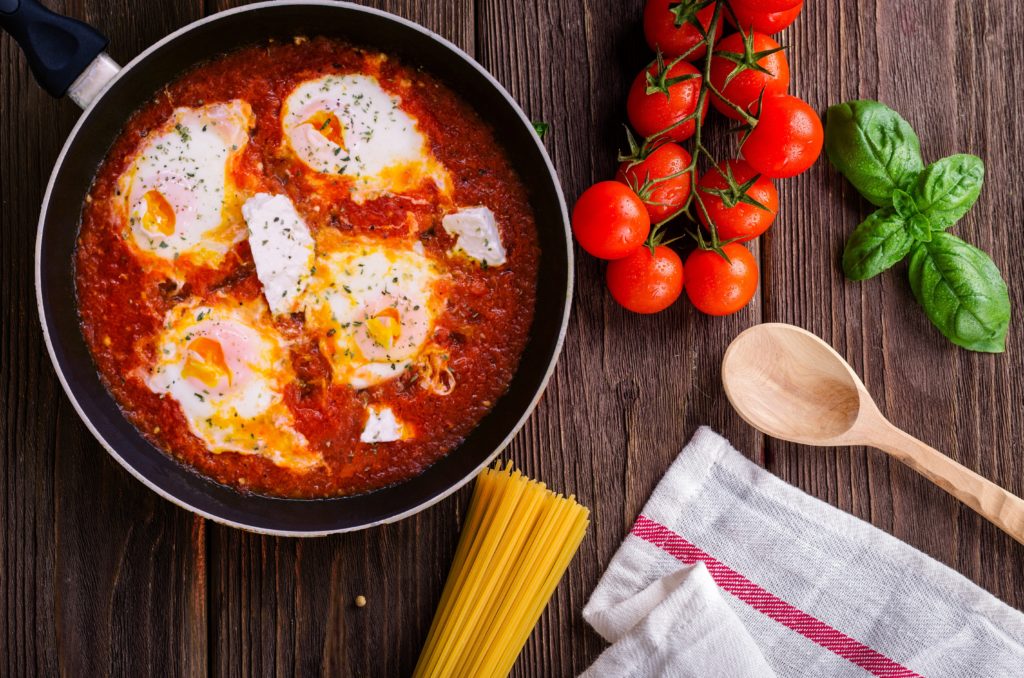One of the best steps you can take towards improving your self-care, physical health, and saving money is to start meal planning.
I truly believe that you are what you eat and consuming healthy nutritious food is critical in your overall health and well-being. In addition, you will save a lot of time and money which is something all of us strive for.
You may wonder why meal planning is so remarkable and how it has such a positive domino effect on other aspects of your life?
Well, I can honestly say that meal planning has been a catalyst in optimizing my life and I am confident it will have the same effect on yours.
My Sunday meal planning routine
Unlike some people, I love Sunday mornings since it’s the day I dedicate 90 minutes for planning and preparing meals for the workweek. I have found that the time I spend preparing my breakfasts, snacks, beverages, and lunches for the entire week is part of my Sunday self-care routine.
Self-care looked at from a holistic point of view is having balance in your physical, emotional, and mental wellness.

I know from experience that setting aside time to plan and prepare nutritious meals is instrumental for my health and wellness. If I have tasty and yummy food prepared ahead of time, then it is highly unlikely that I will make poor food choices throughout the week.
Perhaps you’re experiencing some WFH burnout and wondering if meal planning will make a difference for you? I definitely think that it makes a difference since it prevents eating or snacking because I’m stressed or bored.
What is meal planning?
Meal planning involves putting together a list of meals to be prepared in advance (or on the day of) instead of trying to decide what you want to eat the moment you feel hungry.
Since you have a meal plan, it prevents last-minute shopping or getting take-out on impulse.

Meal planning also requires setting aside time to plan, shop for ingredients, and prepare meals in advance. You feel less stressed and more confident because you don’t have to worry about what you’re going to eat for your next meal.
5 simple steps for meal planning
Step 1: Check out what you have on stock
Before you try to make an elaborate meal plan, take stock of what you have in your cupboards and freezer. Perhaps you made a delicious batch of chili that you forgot about and you can unfreeze it for dinner Monday night?
Unsure what to have on stock in your pnatry? Check out this awesome article by The Every Girl on 10 Must-Have Ingredients for a Stocked Pantry.
Step 2: Map out your meals
My husband and I sit down every Thursday and map out meals for the upcoming weekend and workweek. We look at each day and primarily focus on what we want to have for dinner since that is a meal that we prefer to have some variety on. We’re both ok eating the same type of food for breakfasts or lunches.
Before we write our menu, I take stock of what is in the freezer and cupboards. Then we review our list and decide on one or two meals that we’ve prepped and put in the freezer as well as a new recipe we may want to try.
After meal planning together, I write down our menu to put on our fridge, review our “master grocery list” and generate a list to take to the grocery store and farmers market.

Something else you can try is to have a theme for each day like Meatless Monday, Taco Tuesday, Leftovers Wednesday, Crockpot Thursday, etc.
Step 3: Focus on eating fresh organic produce
Remember what I said about “you are what you eat?” Yeah, it’s a general mantra I follow since I really believe what you eat makes a difference in your self-care, mood, energy, health and overall well-being

As a result, try to incorporate fresh vegetables and fruits into your weekly meal planning. One way of doing it is to challenge yourself to have a variety of colors on your plate.
Since I work with dieticians at the hospital, I’ve learned a lot about best practices for meal planning so I generally follow My Plate method.
Most importantly, eat as many organic foods as possible. Try to purchase a majority of your fruits and vegetables from your local farmer’s market.
In doing this, you are helping your local economy, local farmers, and most importantly your health.
If you don’t have time to go to the local farmers market every week, you can sign-up for programs like Farm Fresh To You which delivers organic bounty to your front door.
Step 4: Be creative and add protein to your diet
I’m not sure about you but I am not a big meat eater so meal planning takes a bit more creativity for folks who eat more of a plant-based diet.
Nonetheless, there are so many food bloggers out there offering amazing recipes so you don’t have to just rely on eating the same type of protein every day.
Step 5: Love your leftovers
One of the best inventions in my opinion is the slow cooker.
If you’re busy and want to make a big batch of food to have ready at the end of your workday, it might be worth investing in a crockpot or Instant Pot.
My friends over at Two Peas and Their Pod have some pretty amazing slow cooker recipes that I recommend you check out.

Moreover, you can make a big batch of your favorite stew in the slow cooker or Instant Pot and freeze half of it. These can be leftovers that you can include in your meal planning for another week.
Top 3 advantages of meal planning
1. You’ll eat healthier food
Meal prepping and planning is advantageous for many reasons because you’re far more likely to eat the healthy foods that you’ve already planned out and cooked.
2. You’ll feel less stressed and more in control
You have a lot more control, will feel less stressed, and impulsive when you’re hungry since you have something nutritious ready to eat.
3. You won’t feel guilty when eating out
You won’t feel guilty when you decide to indulge by getting take out or going to a restaurant because you’ve been eating well overall so you know that you can treat yourself.
How meal planning saves you money
Another bonus of meal planning is that it saves you money. Lots and lots of money!
Let’s say you don’t really believe in meal planning or don’t want to spend time doing it so you primarily do takeout for your meals. How much do you think you’re spending on eating out?
The scary amount of money you spend eating out
The average American household spends about $3,000 a year dining out, according to the Bureau of Labor Statistics (remember that one person spending only on him/herself counts as a household, too.)
Are you thinking there’s no way you could spend that much?
Well, let’s take another look.
If you typically go out for lunch during your workweek for a year, you are probably spending around $10 a meal. So every week you’re spending $50 on just lunch (this doesn’t include getting your Starbucks coffee in the morning or a mid-afternoon snack).

Perhaps you pack your lunch and just go out to dinner or you order takeout. In that case, you’re probably spending the same amount.
Therefore, if you’re spending $50 a week on restaurant food, you’re spending $2,500 per year. Surprisingly, this cash adds up to almost half of the average American’s annual food budget. Yikes!
If you’re still not convinced, check out this very funny article written by Jillian Berman on why Buying Your Lunch Is A Terrible Idea. The End. No More Debates.
Can meal planning save you enough money to fly first class?
I don’t know about you, but I would much rather use my hard-earned money to travel rather than eat out. Perhaps even fly first class?
Guess what, if you meal plan and limit eating out for 1 year, you would be able to save over $2000, which is approximately the cost of a roundtrip first-class flight to Hawaii.
Meal prepping takes about 90 minutes a week
Some of you may think that meal prepping is a waste of time or that it is an inconvenience. Some of you may say that you don’t have time to prepare your food because you’re very busy.
So let’s break it down for one workweek: 5 breakfasts, lunches, snacks and beverages.
On average I spend about 90 minutes preparing all my food for the whole week (not including dinner).
That’s roughly about 4 minutes per meal which is usually less time than it takes to order take out or go to a drive-through.

4 minutes per meal saves me about $400 a month or $4800 a year. This is based on me saving roughly $20 per day by not eating restaurant food.
My husband and I spend about $5000 on our roundtrip flight and 1-month visit staying with his family in Austria. Therefore, by meal planning for 1 year, we are able to travel to Austria fairly easily.
Perhaps you don’t want to dedicate 90 minutes on your Sunday to meal prep for the week and you’d rather do it every night.
Another secret to saving time on meal planning
One way to cut down on time for your meal planning and prepping is to eat the same type of breakfast and lunch throughout the week. For example overnight oats or egg frittatas for breakfast and hearty salads for lunch.
How to ensure that your food stays fresh
The secret to meal planning is investing in fresh quality ingredients and most importantly…Tupperware!
Yes, you heard me correctly, the type of Tupperware you use impacts how long your food stays fresh.
I’ve used a variety of Tupperware to store my food and the only one that I have found that actually stores the food fresh from the day it’s prepared to the last day I eat it is glass Tupperware from Pyrex.

I don’t recommend storing your food in plastic because it’s harmful to your health and the environment. It’s okay to use plastic to freeze food but not for storing fresh food for a whole week. If you don’t have any choice but to use plastic then I recommend a brand like Snapware because it is free from BPA and is easy to carry.
Once you have invested in good Tupperware and reusable flatware, you can plan your meals for the week and be environmentally friendly.
Some helpful meal planning menus
There are a million food bloggers out there and lots of ideas on planning all your various meals throughout the week.
If you don’t want to read articles then watch a YouTube video. I love the videos from Mind Over Munch because she breaks things down easily and I’ve tried her suggestions which work super well.
If you love eating salads for lunch as I do, check out this blog article from my friend Lindsey Johnson on How to Pack a Week’s Worth of Make-Ahead Salads.
Wrap-up
Meal planning is a wonderful way to invest in your self-care, health, and overall well-being. In addition, it is healthy and saves you time and money.
Since my husband and I follow a plant-based diet, we invest in high-quality products and ingredients that last longer and are tastier. If you don’t have time to go to the farmers market then go to the grocery store and buy produce from the organic section or use a delivery service.
On Sunday’s I wash and cut everything for my breakfasts, lunches, and snacks. Once I have prepared everything, I store all of the foods in my favorite Pyrex containers and voila I have my whole week’s worth of meals.
Don’t forget to invest in high-quality Tupperware because it will help make the food last longer and easier to store. Once you get into the habit of weekly meal planning you’ll see how easy it is and maybe even convince your co-workers to do it too!
Have you ever tried meal planning? If so, what has worked well for you and what recommendations do you have for others? Please share your stories and comments below.





2 Responses
This is a great meal plan with a lot of useful info. I love to prepare my own food and am very conscious of what I eat or to be completely honest, I am a picky eater 🙂 I do believe that food makes us healthy as much as it can make us feel unwell. Being an intermittent fasting follower I decided to share my experience at https://healingyourlifeblog.com/intermittent-fasting-weight-loss-plan/. Changing the way I consumed my meals helped many issues I had during menopause. I am a happy person now 🙂
Hi Biljana I completely agree with you and there’s been a lot of research showing how intermittent fasting can help with numerous health challenges. Thanks for sharing a link to your post!